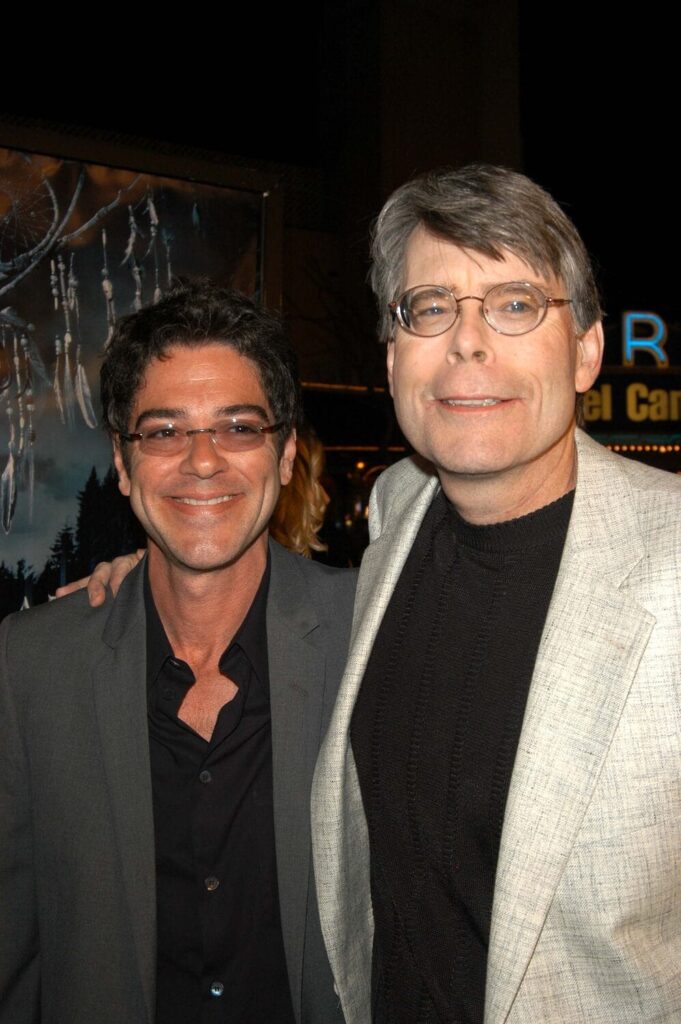Are you a fan of horror and thriller fiction? If so, you’ve likely heard of Stephen King. He’s one of the world’s most successful authors, and has been writing since the 1970s.
His vast body of work includes novels, novellas, short stories, screenplays and more. From sinister clowns to haunted hotels to vengeful spirits, Stephen King has written a wide variety of horror stories that have been designed to keep readers on the edge of their seats. He also has a knack for creating characters that readers can connect with and root for.
In this article, we will explore how Stephen King became a master in horror and thriller fiction. We’ll look at the evolution of his writing process, his most famous works, and his place in pop culture. So if you’re looking for an in-depth look at a master storyteller–keep reading!
Stephen King’s Popularity and Body of Work
The world-famous author, Stephen King, is renowned for his stories of horror and suspense. Since his first novel Carrie was published in 1974, King’s writing career has gone from strength to strength. He has written over sixty novels and two hundred short stories, many of which have been adapted for the screen. In fact, many of his works have become bestsellers or have achieved classic status.
One of the reasons for Stephen King’s popularity is that he creates compelling characters who live in convincing worlds and endure adversity. His characters often face difficult moral dilemmas and must navigate complex personal relationships under trying circumstances.
King is also known for his ability to create a sense of dread and fear that compels readers to keep turning the page despite their reservations. His works often take ordinary people and put them into extraordinary circumstances that are riddled with hints of supernatural activity. This produces a thrilling combination of intense anticipation, heart-pumping action scenes and heart-wrenching character development that draw readers in until they reach the very last page.

His Notable Novels
Stephen King is best known for his horror and thriller fiction, which have made him one of the best-selling authors of all time. His writing career began in 1974 with the publication of “Carrie”, and since then, he has produced over 60 novels and 200 short stories.
Here are a few of his memorable novels that have become some of the greatest horror classics ever:
- “The Shining” (1977): A story about a man’s descent into madness while working as the caretaker in a haunted hotel.
- “Pet Sematary” (1983): An eerie tale about a mysterious burial ground with unusual powers and its effect on the family who lives nearby.
- “Misery” (1987): A psychological horror about an author who is captured by his deranged fan.
- “It” (1986): About seven childhood friends who join forces to fight an ancient evil creature that lurks in their small town.
Regardless of your favorite Stephen King novel, it’s clear that his unique blend of horror and thriller fiction continues to captivate readers around the world.
His Impact on the Horror Genre
Stephen King’s work has had an enormous impact on the horror genre throughout the decades. He has created some of the most iconic horror stories of all time and many argue that he reinvented what horror could be.
The influence of his work is evident in every aspect of modern horror, from the slow-building suspense of his stories to his affinity for using everyday items as monsters. His writing style is often imitated, and it is easy to see why: King weaves together complex plots with relatable characters and a healthy dose of terror to create a unique experience that leaves the reader breathless.
He has also had an impact on other elements of horror fiction, such as inspiring a new generation of writers to explore the creativity and depth that can come with horror writing. From his novels to his short stories, Stephen King has expanded what people thought was possible when it comes to fear and storytelling.
Themes Found in King’s Writings
One of the things that makes Stephen King’s work so captivating is the presence of recurring themes throughout his work. From the protagonists he chooses to the messages he wants to convey, King’s books are filled with common themes that allow readers to better connect with his characters and stories.
Good vs. Evil
Many of King’s books have a moral element, with good and evil forces in constant battle. These forces may be supernatural—like in The Shining—or more realistic, like in Carrie where Carrie battles with her oppressive mother. No matter what form they take, both parties want something and rarely will they agree on anything. It is up to the protagonist(s) to help restore balance and justice as best they can.
The People We Don’t Talk About
King has also made a name for himself by giving a voice to those who would not otherwise have one. In Pet Sematary (1989), an elderly man is haunted by his past; in Rita Hayworth and Shawshank Redemption (1982) Andy Dufresne serves a life sentence for a crime he did not commit; In The Stand (1978) mother Abagail rallies what remains of society against an evil entity; and Cujo (1981) features an aging St Bernard whose mind has been twisted by rabies, who becomes the victim of circumstance when he attacks an innocent woman’s car.
It is these characters that drive home King’s core message – even when all hope seems lost, kindness can prevail over hatred, and redemption awaits even those who have done terrible deeds.
Adaptations From His Works
You may know Stephen King for his spine-tingling horror and thriller novels, but many of them have been adapted into successful films. In fact, over a hundred of his works have been brought to life on the big screen!
Some of these adaptations include:
- The Shawshank Redemption, based on the novella “Rita Hayworth and Shawshank Redemption” from Stephen King’s 1982 collection Different Seasons;
- Carrie, which was adapted from King’s debut novel published in 1974;
- The Shining, based on his 1977 novel;
- It, based on Stephen King’s 1986 novel about a group of children confronting their fears in a small town; and
- Doctor Sleep, which was adapted from his 2013 sequel to The Shining.
In addition to these film adaptations, several of Stephen King’s works have been adapted into TV series as well. These include the Hulu series “Castle Rock”, which is inspired by various stories written by Stephen King over the years. Therefore, it is no surprise that he has been able to maintain such a strong presence in both literature and film for decades.
The Continuing Allure of Stephen King at Bookstores
It’s no wonder that readers around the globe continue to flock to bookstores for Stephen King novels – his work is captivating in its ability to simultaneously horrify and entertain. For over 40+ years, he has crafted intricate tales of horror and suspense in countless books, films, television series, and short stories.
King’s ability to create compelling yet relatable characters has been particularly appealing to readers. He produces protagonists that readers easily identify with by placing them in situations they can relate to. King’s stories are often underpinned by themes of resilience and perseverance even against the toughest of odds, making his characters not only likable but inspiring as well.
The writing style used by King also stands out from other horror authors. He usually adds humor into his text that serves as a palette cleanser from scenes of terror and chaos, bringing this dark fiction genre back from the brink of despair. With sentences that dance upon the page, Stephen King’s ability to craft prose that takes readers on a rollercoaster ride through fear, terror, love and hope is unparalleled by many other authors today.
In conclusion, Stephen King is a living legend whose books have captivated readers since the 1970s. With an astonishing body of work spanning multiple genres, he has been a major influence on film and television, inspiring a whole generation of authors. King’s stories explore our shared anxieties and anxieties, and the themes tackled in his novels continue to remain relevant and inspiring today. King has the power to change the landscape of the horror genre and he continues to do so with every new book he publishes. He is a true master of the craft and a pioneer in storytelling.








